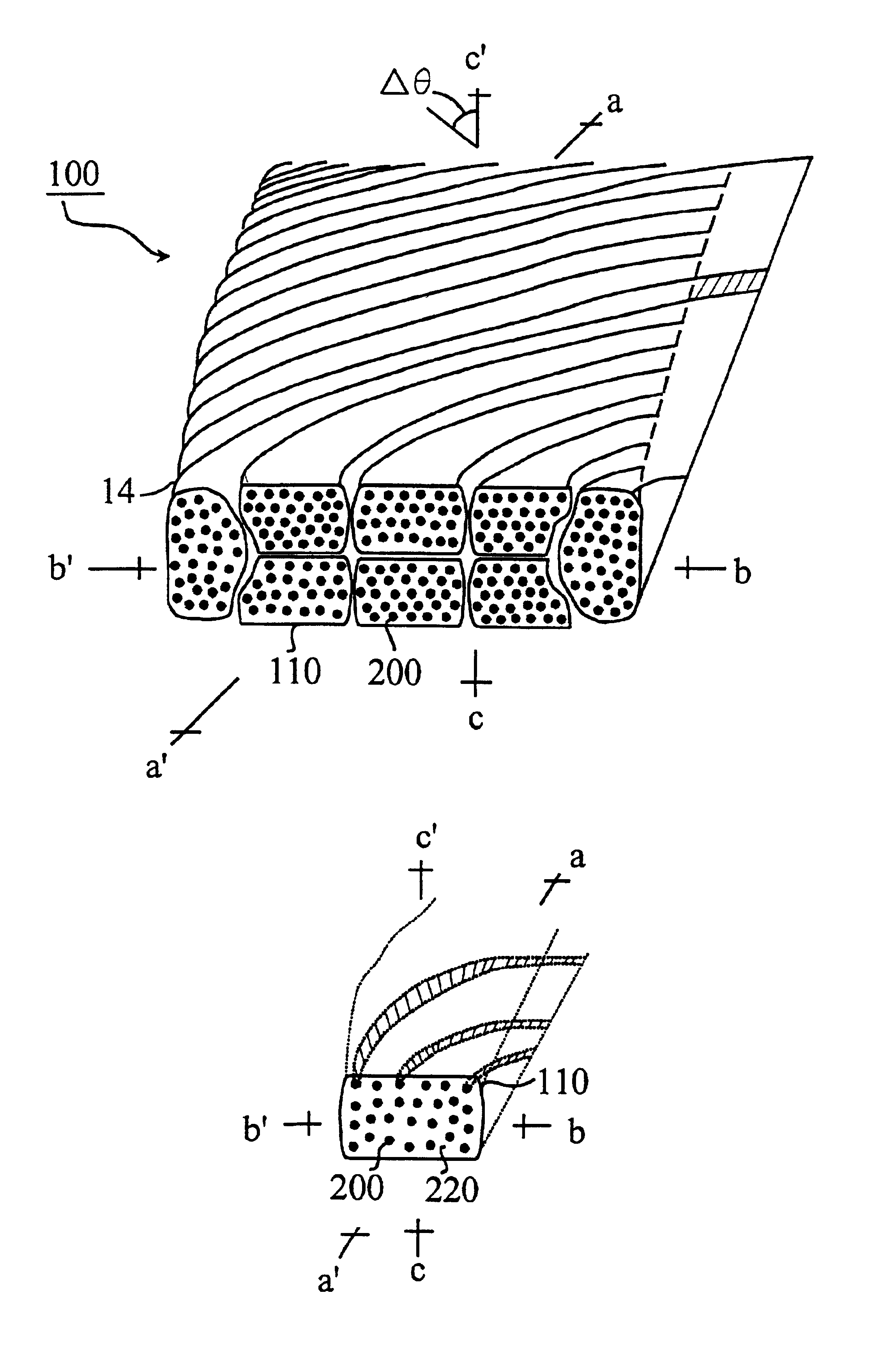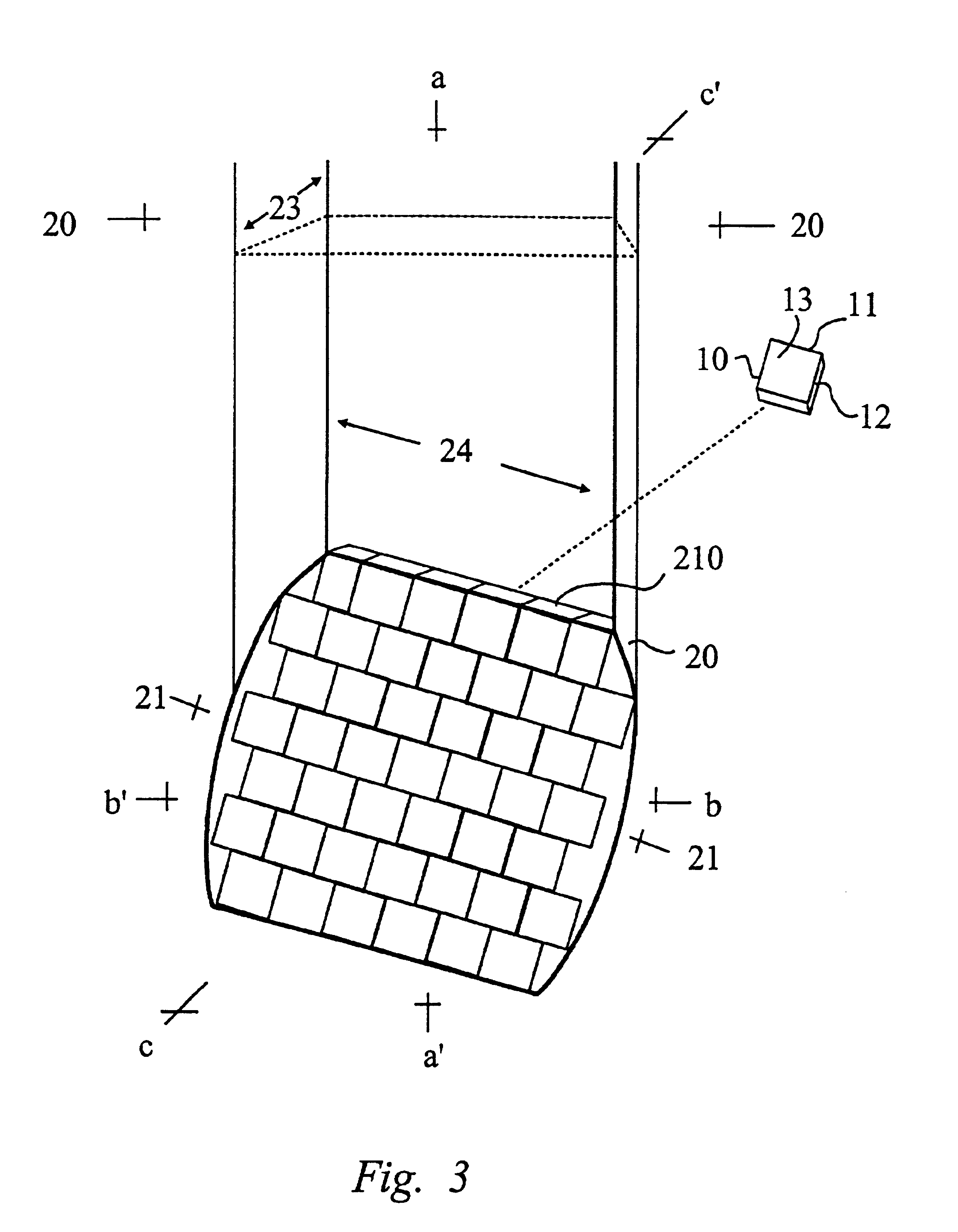Cabled conductors containing anisotropic superconducting compounds
a superconducting compound and cabled conductor technology, applied in the direction of superconducting magnets/coils, magnetic bodies, basic electric elements, etc., can solve the problems of inability to form high-package structures, complex structure, brittleness, etc., and achieve the effect of increasing the overall strain tolerance and performance of the cabled conductor
- Summary
- Abstract
- Description
- Claims
- Application Information
AI Technical Summary
Benefits of technology
Problems solved by technology
Method used
Image
Examples
example 1
[0054]A 91 filament composite was made by the PIT process with an approximately a hexagonal array filament pattern using standard monofilament 2223 precursor in a fine Ag sheath. Precursor powders were prepared from the solid state reaction of freeze-dried precursors of the appropriate metal nitrates having the nominal composition of 1.8:0.3:1.9:2.0:3.1 (Bi:Pb:Sr:Ca:Cu)?]. Bi2O3, CaCO3, SrCO3, Pb3O4-, and CuO powders could equally be used. After thoroughly mixing the powders in the appropriate ratio, a multistep treatment (typically 3-4 steps) of calcination (800° C.±10° C., for a total of 15 h) and intermediate grinding was performed in order to remove residual carbon, homogenize the material and generate a BSCCO 2212 oxide superconductor phase. The powders were packed into silver sheaths to form a billet. The billets were extruded to a diameter of about ½ inch (1.27 cm) and annealed at 450 C for 1 hour. The billet diameter was narrowed with multiple die steps, with a final step dr...
example 2
[0057]A 91 filament composite was made with an approximately a hexagonal array filament pattern as described in Example 1 above. In this example, the multifilament composite was further drawn to nominally 0.028 inch diameter and turk-headed or drawn through a square die to 0.0245 inch on a side. The square cross section composite was annealed in air at 300C for nominally 10 minutes. The material was divided approximately equally into 8 parts and each was layer wound onto a cabling spool.
[0058]An 8 strand Rutherford cable is made from 91 filament composite strand. A “ferris wheel” cabling configuration is used, where the spools' orientation in space is fixed as it rotates around the axis of the cabler, similar to a seat on a ferris wheel. The tension on each strand is controlled by magnetic breaks and set to nominally 0.5 inch-pounds. The width and thickness of the cable were set by a non-powered turks-head to be 0.096 and 0.048 inch, respectively. The strands enter the turks-head wi...
PUM
| Property | Measurement | Unit |
|---|---|---|
| temperatures | aaaaa | aaaaa |
| thickness | aaaaa | aaaaa |
| thickness | aaaaa | aaaaa |
Abstract
Description
Claims
Application Information
 Login to View More
Login to View More - R&D
- Intellectual Property
- Life Sciences
- Materials
- Tech Scout
- Unparalleled Data Quality
- Higher Quality Content
- 60% Fewer Hallucinations
Browse by: Latest US Patents, China's latest patents, Technical Efficacy Thesaurus, Application Domain, Technology Topic, Popular Technical Reports.
© 2025 PatSnap. All rights reserved.Legal|Privacy policy|Modern Slavery Act Transparency Statement|Sitemap|About US| Contact US: help@patsnap.com



